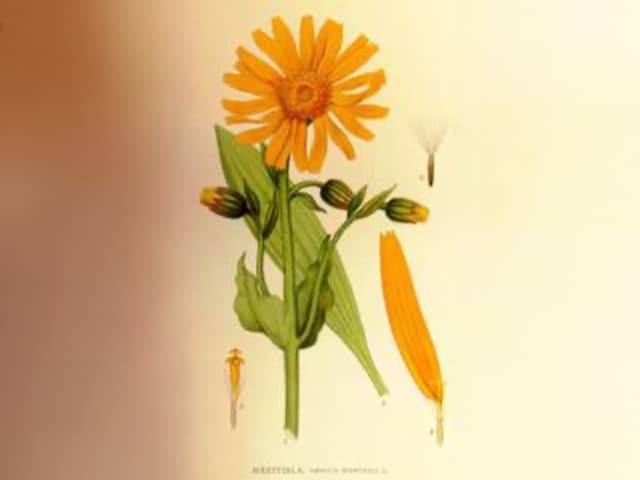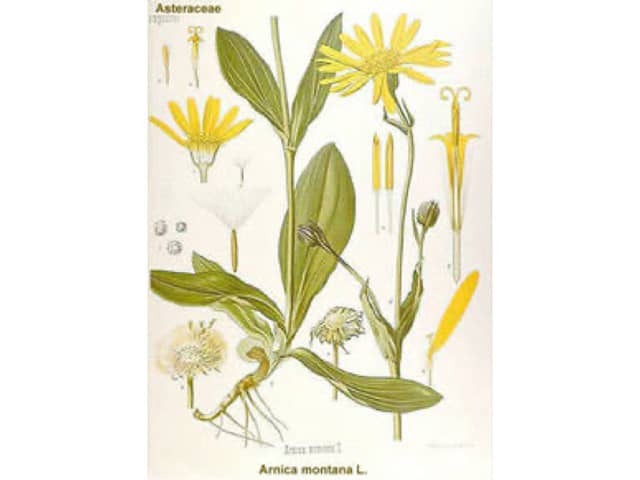Main menu
Common skin conditions

NEWS
Join DermNet PRO
Read more
Quick links
Author: Hon A/Prof Marius Rademaker, Dermatologist, Hamilton, New Zealand, 1999
Common name: |
Arnica, Mountain tobacco or Wolf's bane |
Botanical name: |
Arnica montana |
Family: |
Asteraceae (Compositae) |
Origin: |
32 species occurring in the North Temperate regions particularly of Europe and the Arctic. |
Description: |
It is a yellow-flowered aromatic herbaceous perennial, which tends to grow in meadows and light woodland. Hardy, flowering in early summer. Hairy leaves in basal rosette. |


Uses: |
It is the major source of tincture of arnica, which is still frequently applied to sprains, bruises and wounds although the evidence of it being helpful is limited. It has been used for chilblains. Other species used for tincture of arnica include A. longifolia, chamissonis and schalinensis. |
Allergens: |
Sesquiterpene lactones, helenalin, carabron, 10-acetoxy-8,9-epoxy-thymolisobutyrate. |
Allergy: |
Allergy to arnica has been recognised for several centuries with over 100 cases reported in the literature. Most cases appear to be from self treatment with tincture of arnica. Arnica contains a group of chemicals called the sesquiterpene lactones, notably helenalin and its esters. These chemicals are known to be strong allergens. Other allergens have also been found. |
Cross reactions: |
Chrysanthemum and other members of the Compositae family. Possibly to Tagetes as well. |
Other information: |
|
Patch test: |
10% tincture of arnica in methylethylketone, 0.5% ether extract |